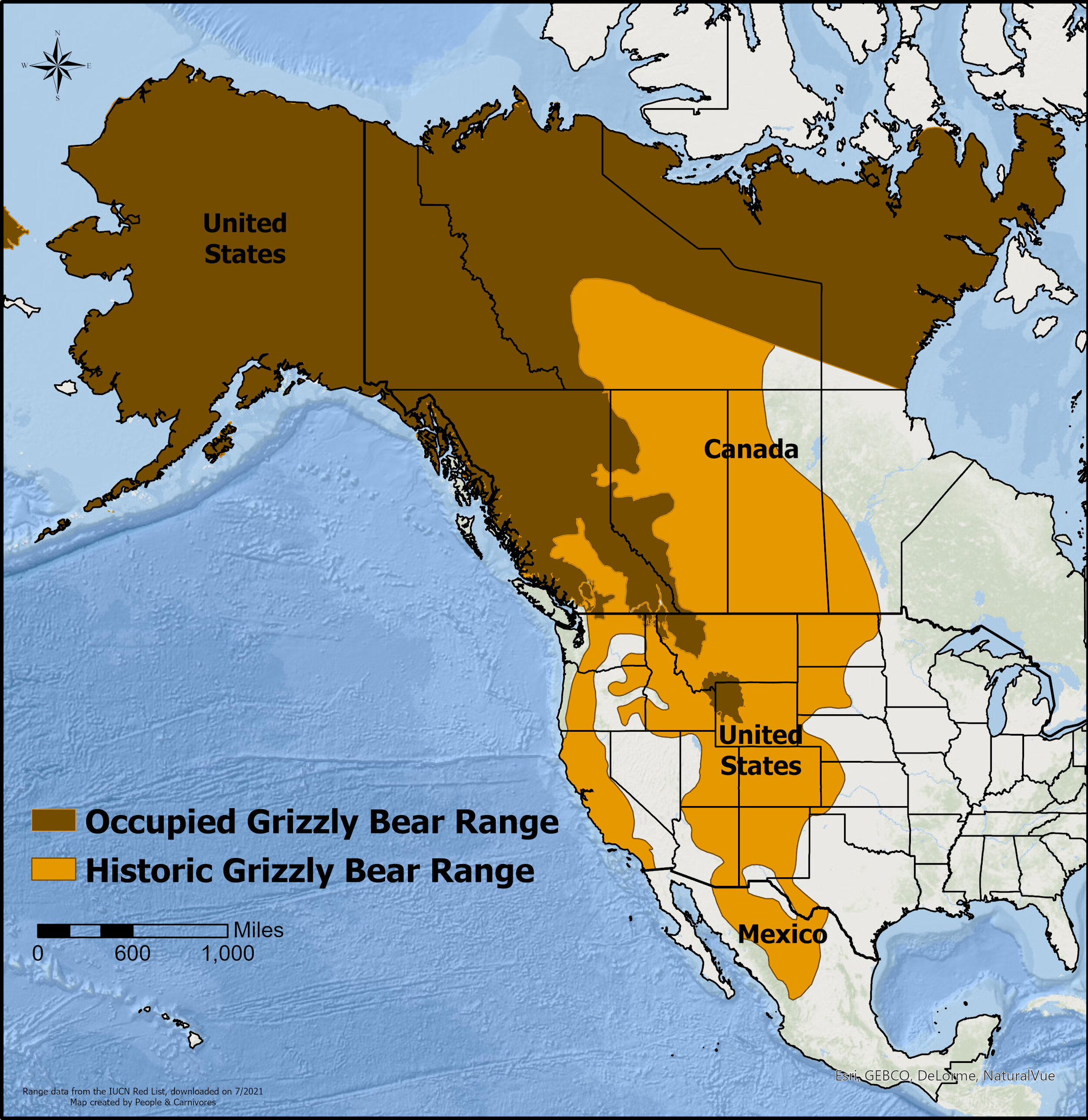
Grizzly Bears
Grizzly bears are icons of wilderness.
The same species as the brown bear (Ursus Arctos), grizzlies are among the largest living carnivores, and can be found in 45 countries around the world. In North America, grizzlies once ranged from Alaska to Mexico and from California to the Mississippi River. They numbered close to 50,000 in the Lower 48 United States, however, by the 1920s, they came dangerously close to being wiped out by the expanding human population. Today in the Lower 48, they live in isolated pockets of Montana, Idaho, and Wyoming (see range map below).
Grizzly Bear Range
Grizzly bears are an umbrella species, which means that when we protect them and their habitat, we in turn protect many other species and increase the overall health of the ecosystem.
Grizzlies are able to live in a variety of habitats, including dense forest, alpine meadows, tundra, desert, and coastlines. They tend to prefer open areas and riparian zones where they can dig for roots and find other nutrient rich sources of food.
As omnivores, grizzly bears eat a variety of both plants and meat. They forage for seeds, berries, roots, and grasses, and will also hunt for deer, elk, fish, insects, and moths. When they emerge from hibernation in the spring, bears will be on the search for winter-killed carcasses scattered about the landscape, which provide them with valuable fuel to kickstart the foraging season. Bears’ claws, which can be 5 inches long (longer than a human finger), make them excellent diggers. In the fall, during a period known as hyperphagia, bears prepare for hibernation again. They can spend up to 14 hours at a time eating and can gain up to 3 pounds each day during this period of intensive eating.
The name “grizzly bear” comes from the “grizzly” blonde tips that accent the bears’ fur. They can range in color from very light tan to dark brown. A sow (female bear) can weigh upwards of 700 pounds, while boars (male bears) can reach upwards of 1700 pounds in coastal areas where their diet is high in fish. In the Northern Rockies, a large male is more in the range of 800 pounds since he won’t be eating nearly as much fish as a bear in Alaska or British Columbia.
Grizzly bears hibernate between 4 and 6 months, which adds up to one-third to one-half of their lives. Their hibernation, however, is not as deep of a slumber as other hibernators. They will wake up if disturbed and may even come out of their dens occasionally during the winter, particularly during warm periods. Large males are the first to emerge from their dens in the spring, and females with cubs are the last to leave the dens.
Fun fact: Bears have an incredible sense of smell, about 700 times better than a humans’.
Did you know? Grizzly bears are the slowest reproducing land mammal. Females can start reproducing once they reach 4 or 5 years old, and they only reproduce once their cubs leave them, which is typically after about three years. Female grizzlies have delayed egg implantation, so if they mate with more than one male grizzly, their cubs can have different fathers.


